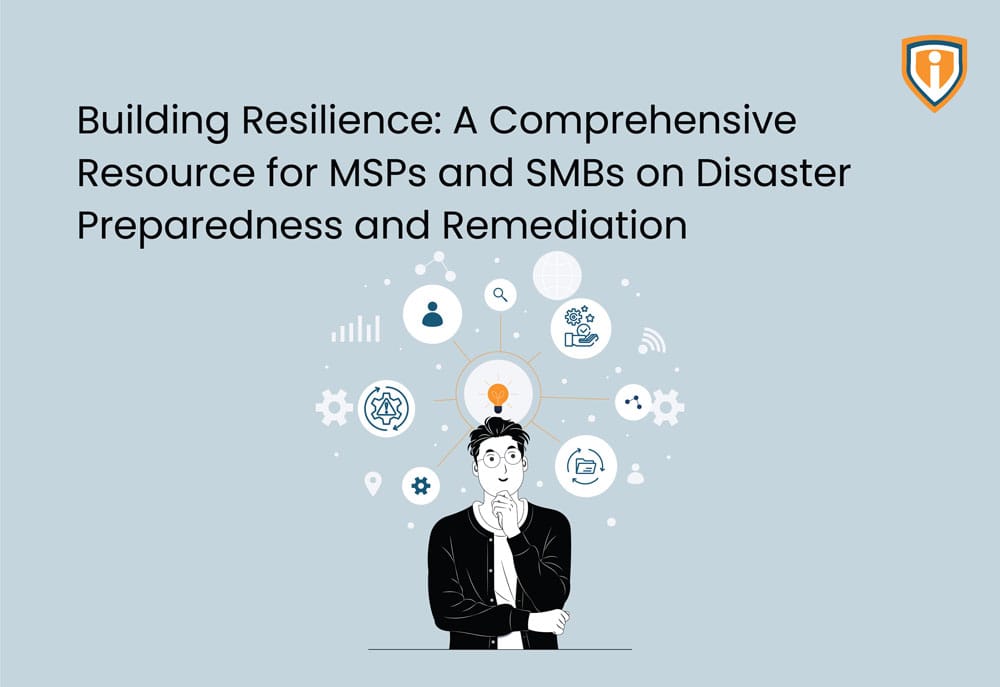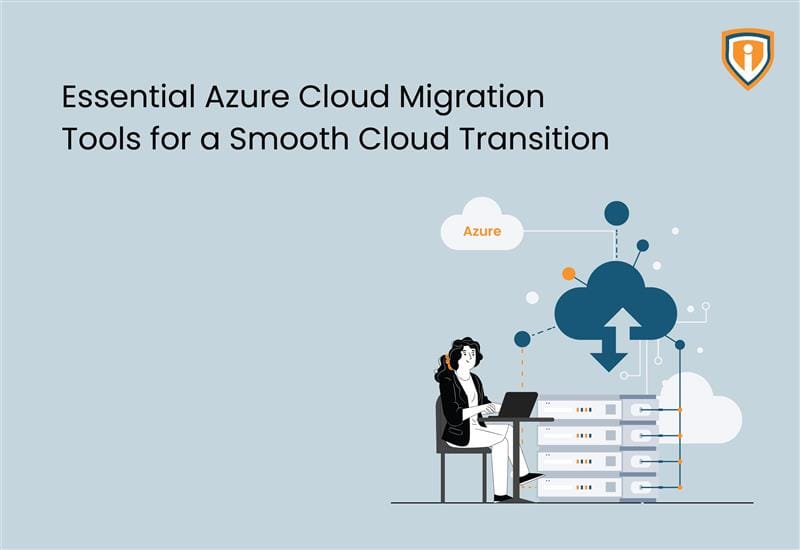Before being attacked by ransomware, a company must have a tested business continuity and disaster recovery (BC/DR) policy in place to restart operations as quickly as possible. Essential procedures and solutions should be taken to prepare for and respond to cyber threats or attacks against your firm.
It might be as straightforward as providing your end users with antivirus software and backup and recovery programs, or it might involve a more involved strategy. It involves security operations center (SOC) tools or managed response solutions in conjunction with network security tools like DNS and Web filtering, network and endpoint firewalls, VPNs, backup and recovery, and other tools.
What is a Disaster Recovery Plan?
A disaster recovery (DR) plan is a written procedure intended to lessen the detrimental effects that an unforeseen incident has on a company’s network. The main goal of a disaster recovery (DR) business continuity plan component is to minimize customer disruption by swiftly recovering data and mission-critical technological capabilities through restoring connections and backups.
With these unforeseen catastrophes, it is more crucial than ever for MSPs and SMBs to have a disaster recovery strategy. Technology has made disaster recovery plans accessible to enterprises of all sizes and sectors when formerly only large corporations had one.
3 Steps to Disaster Recovery Plan
Contrary to popular belief, creating a disaster recovery plan is straightforward. Although it takes some work, investing in one today may help you save a lot of time and money in the long run. These three actions will help you begin a catastrophe recovery strategy.
1. Set Priorities for Backup
Understanding what fundamental technological infrastructure and information your business needs to function is critical. Once this has been done, you may identify any vulnerabilities and decide on the order, location, and timing of backups.
To guarantee speedy and efficient restoration in a disaster, it is crucial to plan what, how, when, and where to back up your data and applications and store and manage the backups.
2. Set Up Positions And Responsibilities
Recovery from a disaster involves people. Without a strategy, your workforce might not know who to call if your systems fail or are interrupted, mainly if the office is no longer accessible.
By designating disaster recovery leaders, who will manage crucial activities, communications, and the restoration of systems, services, and customer support, you can lay the groundwork for your disaster recovery strategy. Make sure staff members are aware of these leaders’ identities and their contributions to the process.
3. Collaborate With An Information Technology Expert
A managed service provider (MSP) has the knowledge and resources to help you prepare, implement, and evaluate your disaster recovery plans. An MSP has expertise in establishing successful disaster recovery strategies for SMBs, from maintaining cloud-based data backups to frequent technological evaluations and training.
This means you can draw on their expertise to create a solid, comprehensive plan to help your company weather anything life throws at it. When you have a disaster recovery strategy, you are less likely to become a statistic. Well-prepared companies can tackle obstacles and endure even the most remarkable tragedies.
Disaster Preparation Plan
When developing your disaster recovery strategy, several essential factors must be considered.
Once you’ve created your strategy, test it to ensure that it covers all aspects of your business and that the logistics are in order.
Because no two firms have the same activities and processes, no two strategies will be the same. Here are some things to think about when creating your plan.
- Employee remote work – How will your staff be allowed to work from home (WFH)? If not now achievable, explore the technology required for this. What are the WFH protocols and precautions? What kind of equipment will they use for WFH?
- RTO (Recovery Time Objective) – How quickly do you need to recover? You will help assess the time, money, and resources required to achieve your goal. If it’s two hours, you’ll put more work into your disaster recovery plan than if it’s two days.
- Communication and duty assignments – It is critical that everyone be on the same page during this period. So, who will convey what to which employees, if any? Employees must understand precisely what is expected of them and who is responsible for responsibilities relating to specific disasters, such as diverting phones, assessing damage, putting up new workstations, and so on.
- Plan for vendor communication and service restoration – Examine each provider’s service level agreements (SLAs) to determine if they offer catastrophe help. What, if anything, is each party liable for?
- Plan for equipment – If a natural catastrophe occurs, such as a fire, storm, or flood, you must know how to safeguard and save your equipment. Distinct scenarios will necessitate particular procedures, therefore, document those various methods.
- Detailed asset inventory – Having this will make filing an insurance claim easier.
- Backup check– Check the backup system’s on-site and off-site performance. You want to keep all the data necessary.
- Changes in your supply chain – From stops to slower delivery timeframes. How will this affect your productivity? What about order fulfillment and deployment? Etc.
How Do You Develop a Reliable Small Business Disaster Recovery Plan?
Before establishing a small business DRP, five critical elements must be considered. Use these considerations to prioritize your DRP and invest in the appropriate solutions.
- Downtime Cost
The downtime cost is the financial expense paid while your business activities are offline.
According to one research, this amount for small enterprises ranges between $137 and $427 per minute.
At the same time, another research estimated it to be $9,000 per minute for major enterprises (for Fortune 1000 corporations, downtime can cost up to a million dollars per hour).
How much your firm loses depends on where you fall on the spectrum and criteria such as business model, industry, and company size.
When justifying your investment in your DRP, downtime cost is a valuable statistic (For example, if the cost of a cloud backup solution is less than your downtime cost, it is a sensible investment.).
- Costs of Implementation and Maintenance
The cost to implement is the initial expense of setting up your DRP. Consider acquiring a backup server for off-site data storage or hiring an IT expert to teach your employees about disaster recovery.
The cost to maintain refers to the ongoing costs of maintaining your DRP, such as a subscription to a cloud backup system.
A sustainable DRP puts both expenses substantially below the costs of downtime. However, bear in mind that these two expenditures are tied to the size of your organization, so as your firm expands, so will they.
- The Integrity of Data and System
When a backup solution claims to restore data and systems to where they were before the disaster, it is called “data and system integrity.”
Although restoring to a specific point in time may be theoretically or monetarily impossible, knowing how this might affect your operations can help you prioritize data and system integrity components in your DRP.
Again, your business strategy, nature, and size will aid you in determining which variables to prioritize. For example, if your company logs transactions a few times per week, data integrity may not be a top concern because the data stays the same.
However, if your company registers transactions by the minute, you should consider it seriously.
- Security
Safety should be a top priority in your DRP if your firm manages sensitive data.
For example, any backup solution you choose must be HIPPA-compliant if you run a medical practice.
Similarly, if you hold payment data, you must guarantee that the servers of your third-party disaster recovery provider meet the strictest security requirements.
As with the other variables mentioned above, the cost of a solution must be weighed against the benefit it would give. Security may be acceptable if you keep invoices and office papers.
As you develop your DRP, you’ll see some costly DRP options available (including some DR-as-a-Service/DRaaS solutions) and others that require professionals to deploy.
- Simplicity
While it may appear helpful to cover all bases with a highly thorough DRP, a complicated DRP will negate the purpose of its aim by making the execution and restoration of normal operations onerous.
When developing a DRP, simplicity is essential since it makes the plan easier to implement. Furthermore, even if the person executing it is not there, anybody else in the firm may easily follow the DRP and restore operations.
As you go through each phase of your DRP, consider if it is easy enough for everyone in your firm to carry out quickly and successfully.
Final Takeaway,
When implementing your DR strategy, you’ll need to pick a DR solution that meets your IT needs while being practical about monitoring and testing. Many SMBs increasingly collaborate with managed service providers (MSPs) to provide and address their IT needs, therefore offloading the cost of mission-critical expertise.
Many of these MSPs provide managed DR services based on disaster recovery solutions. Because an MSP can add disaster recovery to your backup in minutes, you will not only have backups that secure your data, apps, and systems, but you will also be able to spin up your IT systems in the cloud to keep your healthy functioning when tragedy hits. After the calamity, you can effortlessly return to the same, new, everyday life.





